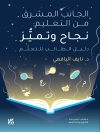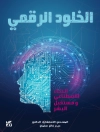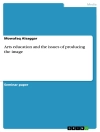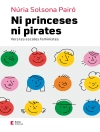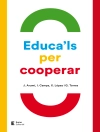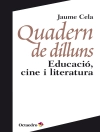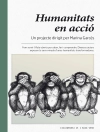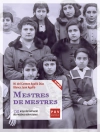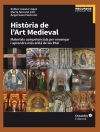Heterogenität im Klassenzimmer ist Alltag und eine Herausforderung. Auch Englischlehrkräfte sind aufgefordert, dies mit speziell zugeschnittenen Lernarrangements zu berücksichtigen. Maria Eisenmann führt daher nicht nur in die Theorien von Heterogenität, Differenzierung und Inklusion ein, sondern stellt individualisierende Methoden und Lernstrategien für die Praxis des Unterrichts vor.
Mục lục
Introduction
1 STATUS QUO
1.1 The Development of Educational Standards in EFL Teaching 20
1.2 A Critical View on Competencies in Language Learning and Teaching 25
2 HETEROGENEITY IN THE EFL CLASSROOM
2.1 The Myth of the Homogeneous Learner Group 28
2.2 Heterogeneity and Diversity as a Chance for EFL Teaching 29
2.3 Educational Standards Versus Individualised Instruction? 30
3 LEARNER TYPES AND LEARNING STRATEGIES
3.1 Interindividual and Intraindividual Differences 36
3.2 Theoretical Concepts of Individual Learner Differences 37
3.2.1 The Learner Types According to Skehan and Ellis 37
3.2.2 The Learner Types According to Vester 38
3.2.3 The Learner Types According to Nunan 40
3.2.4 Gardner’s Theory of Multiple Intelligences 41
3.3 Students’ Diversity 44
3.4 Diagnoses 47
3.5 Bloom’s Taxonomy 48
3.6 Learning Styles and Learning Strategies 50
4 DIFFERENTIATION AND INDIVIDUALISATION – A DEFINITION
4.1 External and Internal Differentiation 56
4.2 Individualisation and Adaptive Teaching 58
4.3 Possible Fields of Differentiation 61
4.4 Challenges and Pitfalls 63
4.5 Key Principles of Differentiated EFL Teaching 65
67 4.5.1 Variety of Methods
4.5.2 Holistic Approach 68
4.5.3 Open Forms of Teaching and Learning 69
4.5.4 Cooperative Learning 70
4.5.5 Variety of Materials and Media 71
5 METHODS OF DIFFERENTIATION AND INDIVIDUALISATION
5.1 General Differentiating Teaching Concepts and Principles 74
5.1.1 Independent Study 74
5.1.2 Weekly Plan 76
5.1.3 Learning at Workstations 77
5.1.4 Project-based Language Learning 80
5.1.5 Task-based Language Learning 82
5.1.6 Extensive Reading 87
5.1.7 Keeping a Reading Log 88
5.2 Further Cooperative Individualising Teaching and Learning Scenarios 91
5.2.1 Learning Through Teaching 91
5.2.2 Think-Pair-Share 92
5.2.3 Jigsaw Puzzle 94
5.2.4 Bus Stop 96
5.2.5 Placemat 97
5.2.6 Gallery Walk 97
5.2.7 Four Corners 99
5.2.8 Numbered Heads Together 101
5.2.9 Reciprocal Teaching 102
5.2.10 Reading Circles 103
5.3 Requirements for Successful Cooperative Learning 105
5.3.1 Learners’ Willingness 106
5.3.2 Group Formation 106
5.3.3 Task Design 107
5.4 Games for Differentiation and Individualisation 108
5.4.1 Benefits of Playing Games in the EFL Classroom 108
5.4.2 Games as a Differentiating Concept for EFL Teaching 109
5.4.3 Types of Games 110
6 DIFFERENTIATION AND INDIVIDUALISATION THROUGH DIGITAL MEDIA
6.1 E-learning and Blended Learning 114
6.2 Web 1.0, 2.0, 3.0 – Timeline and Definition 115
6.3 How Web 2.0 Tools Foster Individualised Instruction 116
6.4 Examples of Practice 119
6.4.1 Digital Media for Communication 119
6.4.2 Webquest 121
6.4.3 Wiki 123
6.4.4 Podcasts and Vodcasts 124
6.4.5 Weblog/Videoblog 127
6.4.6 Social Media 130
6.4.7 Edu-Apps and Mobile Learning 133
6.4.8 Gamification 136
6.4.9 Virtual Reality 139
6.4.10 Augmented Reality 141
7 DIFFERENTIATING FORMS OF ASSESSMENT AND EVALUATION
7.1 Language Assessment Literacy 144
7.2 Testing, Assessment, Evaluation 146
7.3 Washback 146
7.4 Quality Criteria of Assessment 147
7.5 Purposes of Assessment 149
7.6 Diagnostic Assessment 149
7.7 Alternative Assessment 150
7.8 One Tool Does Not Fit all – Differentiated Assessment Strategies 152
7.8.1 Creating a Portfolio Assignment 152
7.8.2 E-portfolio Assignment 162
7.8.3 Learning Contracts 163
7.8.4 Self and Peer Assessment 166
7.8.5 Learning Process Observation 169
7.8.6 Feedback on Oral Production 171
7.8.7 Digital Assessment 175
8 STUDENT AND TEACHER ROLES IN A DIFFERENTIATED EFL CLASSROOM
8.1 Redefined Roles for Students and Teachers 180
8.2 Teacher as a Reflective Practitioner and Action Researcher 184
8.3 The Flipped Classroom 187
9 AUTONOMOUS LANGUAGE LEARNING AS AN OPPORTUNITY FOR DIFFERENTIATION AND INDIVIDUALISATION
9.1 The Concept of Learner Autonomy 194
9.2 Individualisation and Learner Autonomy 197
9.3 Effectiveness of Autonomous Learning 197
9.4 A Model for Developing Learner Autonomy 198
10 FUTURE PERSPECTIVES: THE CHALLENGE OF INCLUSIVE EDUCATION
10.1 The UN-Convention on the Rights of Persons with Disabilities 204
10.2 From Exclusion to Inclusion 206
10.2.1 Exclusion 206
10.2.2 Segregation 207
10.2.3 Integration 208
10.2.4 Inclusion 208
10.3 Index of Inclusion 209
10.4 The Implementation of Inclusion in the EFL Classroom 210
10.5 Benefits and Drawbacks of Inclusive Education in EFL Teaching 212
Suggested Answers for the Tasks 217
Bibliography 229
Index 241
Giới thiệu về tác giả
Prof. Dr. Maria Eisenmann ist Inhaberin des Lehrstuhls für Englische Fachdidaktik an der Universität Würzburg.


